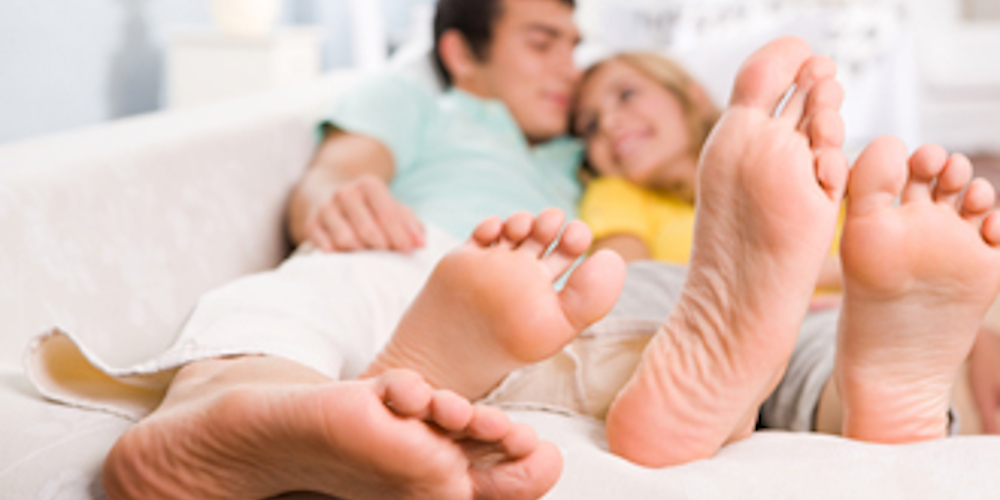On Tuesday, August 19, 2025, our Renton Podiatry Clinic, located on Valley's main campus, moved to Renton Landing.
Our new Renton address is 1205 N 10th Street, Suite A, Renton, WA 98057.
This move does not affect patients who see their provider at our Covington location.
Foot & Ankle (Podiatry)

Moving Forward to Achieve Good Foot Health
From check-ups to treatments and surgery, the physicians at the Podiatry Clinic are skilled in handling the foot and ankle needs of adults and children. We provide services for a wide range of foot and ankle conditions, as well as the most advanced, specialized foot care for seniors and those managing chronic diseases and conditions like arthritis, diabetes, lupus, spinal cord injuries, kidney disease and cancer.
 From Ankles to Toes, We Can Help Keep You Walking
From Ankles to Toes, We Can Help Keep You Walking
The specialists at Valley Podiatric Clinic provide treatment for both acute and chronic conditions. These conditions include Achilles tendon injuries, ankle sprains, fractures of both the foot and ankle, crush injuries, sports injuries and over-use symptoms. Our expert physicians also diagnose and treat many chronic problems such as arthritis, metatarsalgia, neuromas, plantar fasciitis, hammer toes and heel spurs. For patients who suffer from diabetes and poor circulation, our physicians offer preventive care and work with other specialists within the Valley Medical Center system to offer a wide range of treatment options to maintain mobility.
Stepped Up Awareness Important for Those with Chronic Disease
Neuropathy, a nerve disorder, and blood vessel disease both increase the risk of foot ulcers. Numbness in the hands or feet is a common symptom of neuropathy in diabetic patients, causing sores or injuries to go unnoticed until ulcers develop, putting patients at higher risk for non-traumatic, lower-limb amputations. Taking good care of the feet is important for everyone, especially those managing chronic disease.
Stay On Track for Maintaining Good Foot Health

1. Inspect your feet regularly. Dry, scaling skin or inflammation of the skin may indicate athlete’s foot. Blisters, corns and calluses are caused by friction, usually by shoes that do not fit properly or by wearing shoes without socks. Warts are caused by a virus that infects the skin. People with diabetes run a higher risk for foot infections because of delayed healing, so they need to inspect their feet every day for non-healing sores or wounds and take extra care to protect the skin of the feet.
2. Trim your toenails straight across. If you trim them in a curve or too short, the edges of the nail may grow into the skin, resulting in an ingrown nail. Cut them so that you can see a bit of skin just above the nail edge. Don’t let them grow so long that they extend past your toes.
3. Don’t wear the same pair of shoes for two or more days in a row. Alternating shoes allows them to dry out before being worn again. Doing so can help eliminate foot odor. Make sure you change socks daily as well.
 4. Avoid narrow shoes that squeeze the toes together and high heels. Narrow shoes that squeeze the foot can aggravate deformities such as bunions or hammertoes. A bunion is an enlargement of the joint at the base of the big toe. Bunions tend to run in families, when a foot type that makes bunions more likely is passed down from parent to child. People who have flat feet or low arches also are more at risk for bunions. People, such as ballet dancers, whose jobs or professions place stress on their feet are at higher risk, as well. High heels force all the body weight onto the toes, disrupt the natural stride and frequently cause foot problems.
4. Avoid narrow shoes that squeeze the toes together and high heels. Narrow shoes that squeeze the foot can aggravate deformities such as bunions or hammertoes. A bunion is an enlargement of the joint at the base of the big toe. Bunions tend to run in families, when a foot type that makes bunions more likely is passed down from parent to child. People who have flat feet or low arches also are more at risk for bunions. People, such as ballet dancers, whose jobs or professions place stress on their feet are at higher risk, as well. High heels force all the body weight onto the toes, disrupt the natural stride and frequently cause foot problems.
5. If you have foot issues, choose lace-up shoes over slip-ons. Lace-ups provide increased adjustability for a more snug fit that reduces friction, as well as offering more stability to the heel.



